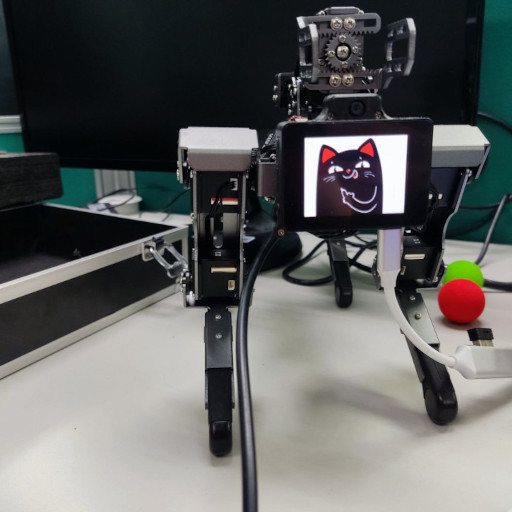Clone the source code
mkdir xgo2 && cd xgo2
git clone git://git.busybox.net/buildroot
git clone https://github.com/e-yes/xgo2-buildroot.git
cd buildroot
git checkout 2023.11.x
make BR2_EXTERNAL=../xgo2-buildroot/ xgo2_defconfig
make -j # you can specify how many CPU cores it can use for buildDownload the image and burn it to the SD card
unzip image_xgo2.zip && gunzip sdcard.img.gz
sudo dd if=output/images/sdcard.img of=/dev/mmcblk0 status=progress- Create hotspot named "XGO2" with password "LuwuDynamics".
- Insert SD-card to the robot and power it up:)
- Use ssh client to connect to it, username is "pi" and the password is the same. You can use
ipythonto play with it.
› ssh pi@192.168.214.65
(pi@192.168.214.65) Password:
$ ipython
Python 3.11.5 (main, Sep 22 2023, 23:40:52) [GCC 12.3.0]
Type 'copyright', 'credits' or 'license' for more information
IPython 8.8.0 -- An enhanced Interactive Python. Type '?' for help.
In [1]: from xgolib import XGO
In [2]: dog = XGO("xgomini") # argument doesn't really matter
In [3]: dog.action(11) # I like this one:)
In [4]: dog.unload_allmotor() # doggy now uses less power
Or use gentle one-liner:
python -c "from time import sleep; from xgolib import XGO; dog = XGO('meow'); dog.action(1); sleep(1.5); dog.unload_allmotor()"
# works in opposite direction
python -c "from xgolib import XGO; dog = XGO('meow'); dog.load_allmotor()"
- If you wonder what is IP-address of the dog, use
arp-scan --localnetto discover it:
# arp-scan --localnet
Interface: wlan0, type: EN10MB, MAC: 30:24:32:b7:d6:62, IPv4: 192.168.214.117
Starting arp-scan 1.9.7 with 256 hosts (https://github.com/royhills/arp-scan)
192.168.214.65 e4:5f:01:e5:3c:dc (Unknown) <--- HERE! Your mileage may vary!!!
192.168.214.65 e4:5f:01:e5:3c:dc (Unknown) (DUP: 2)
192.168.214.163 56:8f:45:0a:d9:f0 (Unknown: locally administered)
Accepted pull requests as well as kicks are welcome.

